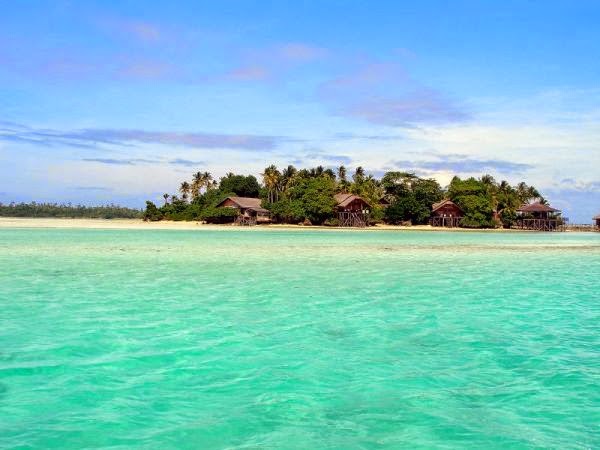Do you know Uluru ..?
Rock Uluru.. One of the most popular natural attractions in Australia, is famous for changing its colors at different times of day and year, with sunset and sunrise glow in red, despite the scarcity of precipitation in this semi-arid region ,during rain rocks acquire silver and grey tones.
Rock Uluru is a huge monolith of sandstone and rocks was formed in the southern part of the Northern Territory of central Australia, located about 335 kilometers southwest of Alice Springs, the Northern Territory's largest cities of central Australia, reaches a height of 348 metres and rises about 876 m above sea level, stretching along more than 2.4 km and width of 1.6 km, and the area around its base eight kilometres.
The indigenous people called the rock as "Uluru" but there is no specific meaning for this name in the Pitjantjatjara language, part of the indigenous people of Australia. The rock also known as "Ayers Rock" ,the last name back to 1873 when monitored by the explorer William Goss and then called it on the name of the Prime Minister of South Australia, Sir Henry Ayers.
Archaeological discoveries indicate that humans settled in the area since more than 10,000 years, while the Europeans arrived in 1870, Ernest Giles and William Goss considered of the first explorers of this place.
The rock is part of the "Uluru-Kata Tjuta National Park" , it is also listed on UNESCO World Heritage sites, near the rock there are a large number of springs ,natural lakes ,rocky caves and ancient drawings, Uluru has a special holiness for the indigenous people of this region.
At mount Olga which is located 25 km to the west of Uluru have been building special zones to give tourists the best angles to observe the rock at sunrise and sunset.
Climbing "Uluru" of the most important thing attracts visitors, and to encourage visitors and the climbing enthusiasts a series of rings outstanding was built in the mountain used to climb, the rings put for the first time in 1964, and was extended in 1976 to become the climbing easier ,but still steep in the mountain the most difficult task for climbers.
It is advised to drink plenty of water during the climb ,and prevents for those who are unfit and suffering from vertigo, climbing also prevents when high winds at the top.
The local population do not climb "Uluru" because of its great spiritual importance to them as a sacred place, and ask visitors not to climb the rock, where local visitors guide says: "we don't prohibit climbing absolutely, but we prefer to respect as a guest on our land to respect our customs and traditions and do not climb the rock" .In 2010, there have been some incidents infuriated indigenous people, leading to renewed calls to ban climbing.
Rock Uluru is a huge monolith of sandstone and rocks was formed in the southern part of the Northern Territory of central Australia, located about 335 kilometers southwest of Alice Springs, the Northern Territory's largest cities of central Australia, reaches a height of 348 metres and rises about 876 m above sea level, stretching along more than 2.4 km and width of 1.6 km, and the area around its base eight kilometres.
 |
| Uluru, Ayersrock, Australia |
The indigenous people called the rock as "Uluru" but there is no specific meaning for this name in the Pitjantjatjara language, part of the indigenous people of Australia. The rock also known as "Ayers Rock" ,the last name back to 1873 when monitored by the explorer William Goss and then called it on the name of the Prime Minister of South Australia, Sir Henry Ayers.
Archaeological discoveries indicate that humans settled in the area since more than 10,000 years, while the Europeans arrived in 1870, Ernest Giles and William Goss considered of the first explorers of this place.
The rock is part of the "Uluru-Kata Tjuta National Park" , it is also listed on UNESCO World Heritage sites, near the rock there are a large number of springs ,natural lakes ,rocky caves and ancient drawings, Uluru has a special holiness for the indigenous people of this region.
At mount Olga which is located 25 km to the west of Uluru have been building special zones to give tourists the best angles to observe the rock at sunrise and sunset.
Climbing "Uluru" of the most important thing attracts visitors, and to encourage visitors and the climbing enthusiasts a series of rings outstanding was built in the mountain used to climb, the rings put for the first time in 1964, and was extended in 1976 to become the climbing easier ,but still steep in the mountain the most difficult task for climbers.
It is advised to drink plenty of water during the climb ,and prevents for those who are unfit and suffering from vertigo, climbing also prevents when high winds at the top.
The local population do not climb "Uluru" because of its great spiritual importance to them as a sacred place, and ask visitors not to climb the rock, where local visitors guide says: "we don't prohibit climbing absolutely, but we prefer to respect as a guest on our land to respect our customs and traditions and do not climb the rock" .In 2010, there have been some incidents infuriated indigenous people, leading to renewed calls to ban climbing.



Comments
Post a Comment